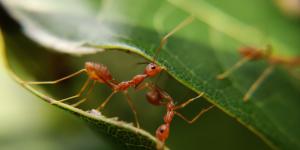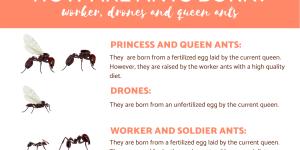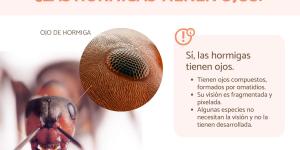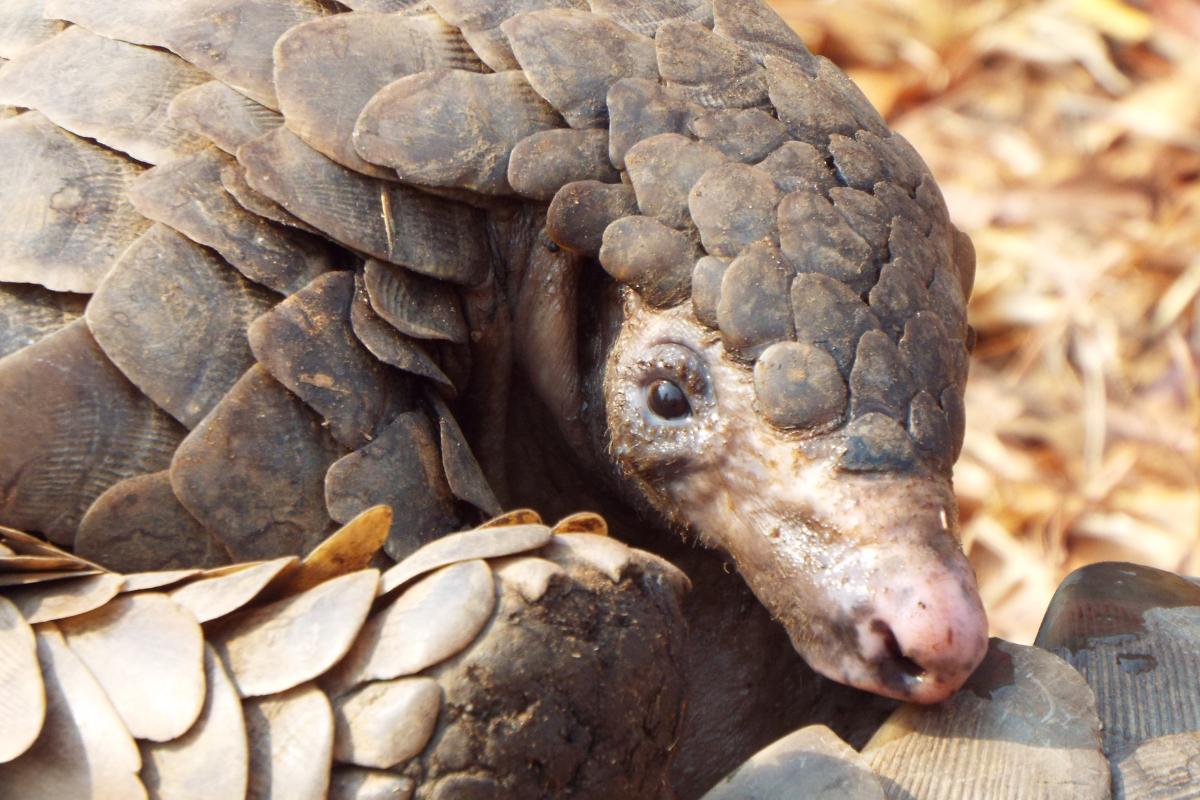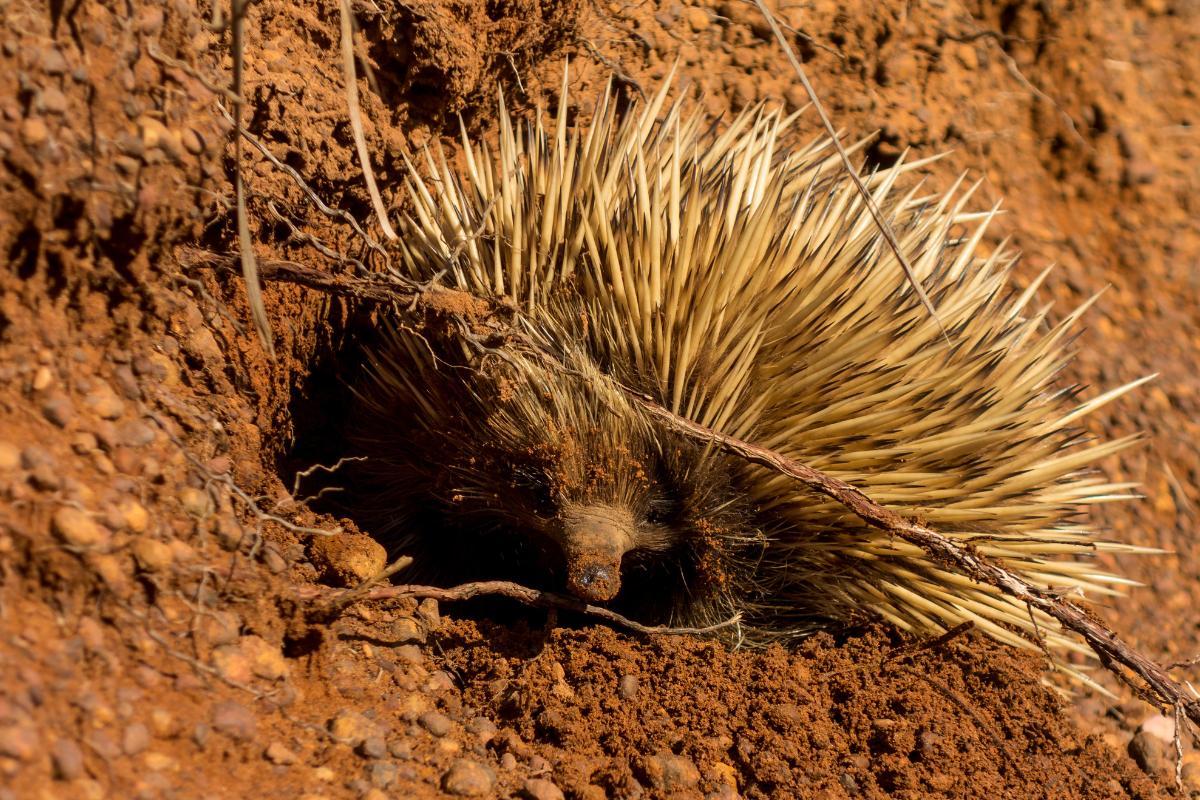What Eats Ants?


Predators that specialize in consuming ants play a crucial role in various ecosystems around the world. These predators, ranging from insects to mammals and even birds, have adapted unique strategies to hunt and consume ants, capitalizing on their abundance and often formidable defenses. Ants, known for their social organization and collective strength, are a ubiquitous presence in almost every terrestrial habitat. They form colonies that can range from a few individuals to millions, depending on the species. This abundance makes them a plentiful and reliable food source for many predators.
In the following AnimalWised article, we will explore what animals eat ants, their main characthersitics and conservation status.
Giant anteater (Myrmecophaga tridactyla)
The giant anteater (Myrmecophaga tridactyla) is the largest species of anteater, inhabiting Central and South America from Mexico to Argentina. Its body length can reach up to 2 meters (6.6 ft) with a long, prehensile tail. The fur is coarse and varies in color, typically gray with a distinctive black and white diagonal stripe across its back.
A defining feature of the giant anteater is its elongated, tubular snout. This specialized adaptation allows it to efficiently penetrate the hardened exterior of ant and termite nests. Its long, sticky tongue, reaching up to 60 cm (24 in) in length, acts as a formidable tool for extracting insects from their underground dwellings or crevices in trees.
The giant anteater is a specialized insectivore, primarily feeding on ants and termites. Its diet can consist of up to 30,000 insects in a single day. These formidable appetites require them to inhabit areas with high concentrations of social insects, such as savannahs, tropical forests, and jungles.
Unfortunately, the giant anteater faces significant threats due to habitat loss from deforestation and poaching. This has led to its classification as "Vulnerable" on the IUCN Red List, indicating a declining population.
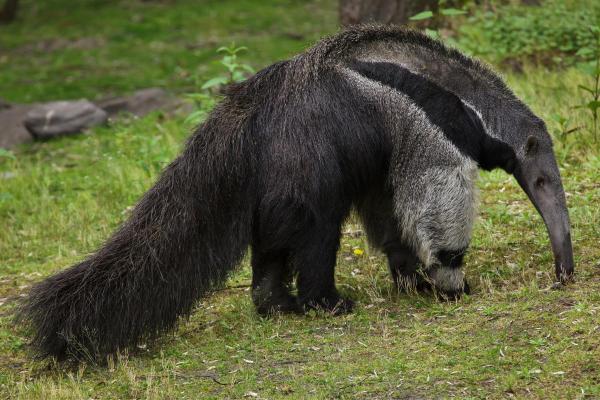
Dwarf anteater (Cyclopes didactylus)
The dwarf anteater (Cyclopes didactylus), also known as the silky anteater due to its soft, silky fur, typically brown or grayish-brown in color, is a small anteater species found in Central and South America. Significantly smaller than its giant relative, the dwarf anteater has a total length typically ranging from 30 to 40 cm (12 to 16 inches), including its tail.
Its slender body and a long, prehensile tail aid in climbing and grasping branches, making it well-adapted for its arboreal lifestyle. Unlike the giant anteater, which primarily feeds on ants and termites on the ground, the dwarf anteater prefers a diet of arboreal ants and termites found in tree canopies. Its long, sticky tongue acts as a tool to extract insects from small crevices and tree bark.
Dwarf anteaters are nocturnal and solitary animals, spending most of their time high in the forest canopy. While the ecological role of the giant anteater is well-established, the dwarf anteater requires further research to fully understand its impact on insect populations. This species faces threats such as habitat loss due to deforestation and forest fragmentation. As with many other wildlife species in the region, conservation efforts are crucial to ensure the survival of the dwarf anteater, which is currently classified as "Least Concern" on the IUCN Red List, reflecting its relatively stable population status.

Pangolin (various genera)
Pangolins are unique mammals belonging to the order Pholidota and are found in Africa and Asia. Characterized by their tough, overlapping scales made of keratin, which range in color from brown to yellowish, acting as armor to protect them from predators, pangolins are often referred to as "scaly anteaters" due to their diet primarily consisting of ants and termites.
There are eight species of pangolins, divided into two genera: the Asian pangolins (Manis) and the African pangolins (Phataginus and Smutsia). Each species varies in size and coloration, but they generally have a similar body structure with a long, sticky tongue for catching insects. Pangolins lack teeth and instead rely on their muscular stomachs to grind up food.
These nocturnal creatures are solitary and spend most of their time foraging for insects in forests, grasslands, and savannas. When threatened, pangolins curl into a ball and use their sharp-scaled tails to defend themselves. Unfortunately, they are one of the most trafficked mammals in the world, primarily due to the illegal wildlife trade for their scales, which are falsely believed to have medicinal properties.
Due to habitat loss and poaching, all pangolin species are listed on the IUCN Red List of Threatened Species, with some classified as endangered or critically endangered.

Anteater (Orycteropus afer)
The aardvark (Orycteropus afer) is a medium-sized, burrowing mammal native to sub-Saharan Africa. Also known as "earth pig" in Afrikaans due to its digging habits and pig-like snout, the aardvark possesses a suite of specialized adaptations for its insectivorous diet.
The aardvark has a stocky body with powerful forelimbs equipped with long claws for efficient digging. Its elongated, pig-like snout houses a highly sensitive sense of smell, crucial for locating underground prey – primarily ants and termites. Large, tubular ears enhance its hearing, while a thick tail provides balance during excavation.
A standout adaptation is the aardvark's incredibly long, sticky tongue. Reaching up to 1.3 meters (4.3 ft) in length, this remarkable appendage acts as a specialized tool for extracting insects from their nests and tunnels. The aardvark's tough skin on its back serves as armor, protecting it from bites and stings while foraging.
Aardvarks are solitary creatures, primarily active at night. Their keen sense of smell allows them to locate insect colonies buried underground. Once a target is identified, the aardvark uses its powerful claws to tear open nests and tunnels. They then utilize their long, sticky tongues to capture large quantities of insects with impressive efficiency.
Fortunately, the aardvark is currently classified as "Least Concern" on the IUCN Red List due to its widespread distribution and relatively stable population. However, localized threats persist, including habitat loss due to agricultural expansion and development. Additionally, hunting for meat and traditional medicine use can impact certain populations.
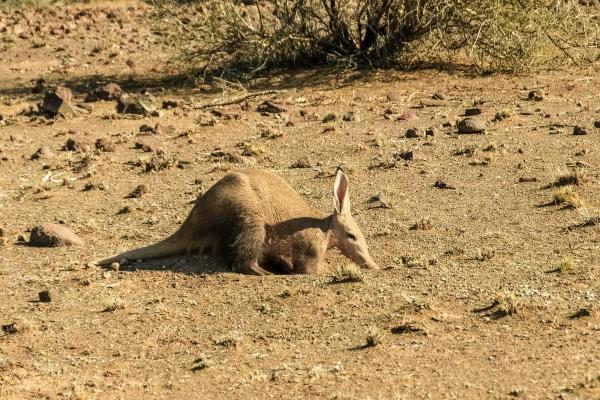
Echidna (Tachyglossidae)
The echidna, a unique egg-laying mammal (monotreme) found in Australia and New Guinea, possesses a remarkable blend of traits.
Covered in protective spines, echidnas utilize their stout limbs and strong claws to dig burrows for shelter and thermoregulation. Size varies by species, with lengths ranging from 30-70 cm.
Primarily insectivorous, echidnas rely on their long, sticky tongues to extract ants, termites, and other invertebrates from hidden crevices and nests. These adaptable creatures thrive in diverse habitats, from forests and arid regions to mountains, as long as prey is plentiful. Their foraging helps maintain ecological balance by controlling insect populations.
Unlike most mammals, echidnas lay a single leathery egg incubated in a temporary pouch. After hatching, the young echidna, known as a puggle, resides in the pouch until further development allows for independent living.
Fortunately, most echidna species are currently listed as "Least Concern" on the IUCN Red List due to their widespread distribution and relatively stable populations.
Echidnas are truly unique, but they're just one branch on the marsupial family tree. Learn about the fascinating adaptations and lifestyles of other marsupial species in this other article.
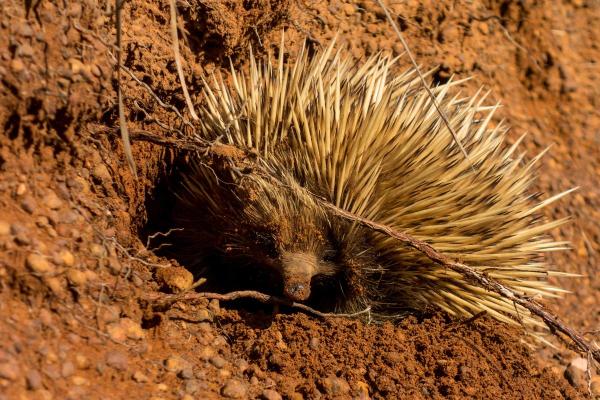
Two-colored antbird (Gymnopithys leucaspis)
The two-colored antbird (Gymnopithys leucaspis) is a small insectivorous bird found in the Amazon Basin of South America. It belongs to the Thamnophilidae family, known for diverse antbird species.
Exhibiting sexual dimorphism, males and females have distinct plumages. Males are primarily black with contrasting white markings on the wings and back. Females, on the contrary, have reddish-brown upperparts and a lighter underside. Both sexes share a slender build and relatively short tails.
Primarily insectivorous, these birds specialize in hunting ants and other arthropods on the forest floor. They often utilize "ant-following," a strategy where they target insects flushed out by army ant swarms.
The two-colored antbird is currently listed as "Least Concern" on the IUCN Red List due to its widespread distribution and stable population trends.

Numbat (Myrmecobius fasciatus)
The numbat (Myrmecobius fasciatus) is a small, insectivorous marsupial endemic to Western Australia. Also known as the banded anteater or walpurti, the numbat is easily recognized by its distinctive coloration and specialized diet.
They have a slender body with soft, reddish-brown fur adorned with bold white stripes across the back and rump. Pointed snout for efficient foraging and a long, bushy tail for balance and maneuverability.
Found exclusively in eucalypt woodlands and dry sclerophyll forests of Western Australia. They prefer habitats with abundant logs and fallen trees for nesting and shelter.
They primarily feed on termites, consuming thousands per day with their long, sticky tongues. This specialized diet makes them crucial for regulating termite populations within their ecosystem.
Unlike many of the animals in this list, numbats are active during the day. Females give birth to underdeveloped young, who mature within their pouch for several months.
It is currently classified as "Endangered" on the IUCN Red List due to several threats, such as habitat loss due to land clearing and agriculture, predation by introduced foxes and feral cats and overall reduced availability of termites due to habitat degradation.
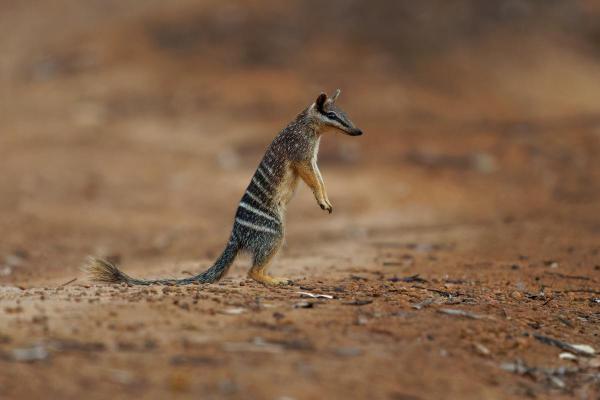
Wall lizard (Sceloporus undulatus)
The wall lizard (Sceloporus undulatus) is a small, insectivorous lizard native to eastern North America. Also known as the eastern fence lizard or prairie lizard, it is a common sight in various habitats.
Wall lizards have a flattened body and relatively short limbs, allowing for adept climbing and maneuvering through their environment. They exhibit sexual dimorphism, meaning males and females have distinct appearances. Males, particularly during breeding season, display vibrant blue patches on their throats and bellies, which become less noticeable otherwise. Both sexes have rough, keeled scales that aid in camouflage against bark and rocks.
Wall lizards are primarily insectivores, consuming a variety of small invertebrates like ants, beetles, spiders, and caterpillars. They are opportunistic feeders, readily taking advantage of prey encountered while foraging on the ground or climbing surfaces.
Active during the day (diurnal), wall lizards exhibit territorial behavior, particularly males, during the breeding season. Males engage in displays to establish and defend their territories. Females lay clutches of eggs in shallow nests dug in loose soil, where the eggs incubate until hatching.
The wall lizard is listed as "Least Concern" on the IUCN Red List due to its widespread distribution, adaptable nature, and stable populations. Their ability to thrive in diverse habitats, including some created by humans, has contributed to their success.
So far, we've explored some of the predators that specifically target ants. However, ants are just one group within the vast insect world. If you're curious about the broader diversity of insect eaters and the ecological roles they play, we recommend checking out this other article.
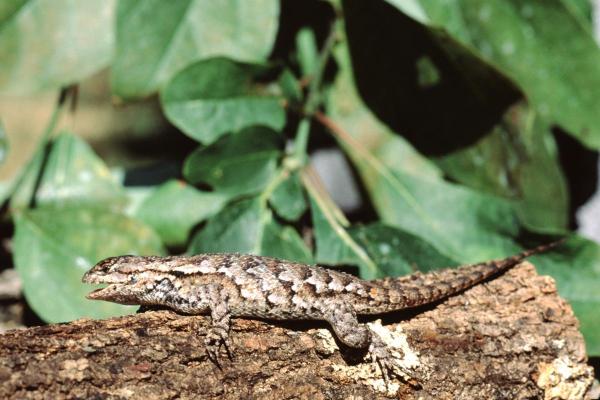
If you want to read similar articles to What Eats Ants?, we recommend you visit our Facts about the animal kingdom category.
- Batcheller, H.J. (2017). Interspecific information use by army-ant–following birds . The Auk: Ornithological Advances, 134(1), 247-255.
- Dean, WRJ, & Milton, SJ (2018). Ants (Formicidae) as food for birds in southern Africa: opportunism or survival? . Ostrich , 89 (1), 1-4.
- Milewski, A.V., Abensperg-Traun, M., & Dickman, C.R. (1994). Why are termite-and ant-eating mammals smaller in Australia than in southern Africa: history or ecology? . Journal of biogeography, 529-543.
- Redford, K.H., & Dorea, J.G. (1984). The nutritional value of invertebrates with emphasis on ants and termites as food for mammals . Journal of zoology, 203(3), 385-395.
- Swartz, M. B. (2001). Bivouac checking, a novel behavior distinguishing obligate from opportunistic species of army-ant-following birds . The Condor, 103(3), 629-633.
- Venable, C.P., & Langkilde, T. (2019). Eastern Fence Lizards (Sceloporus undulatus) display an ontogenetic shift in relative consumption of native and invasive prey . Canadian journal of zoology, 97(5), 419-423.

